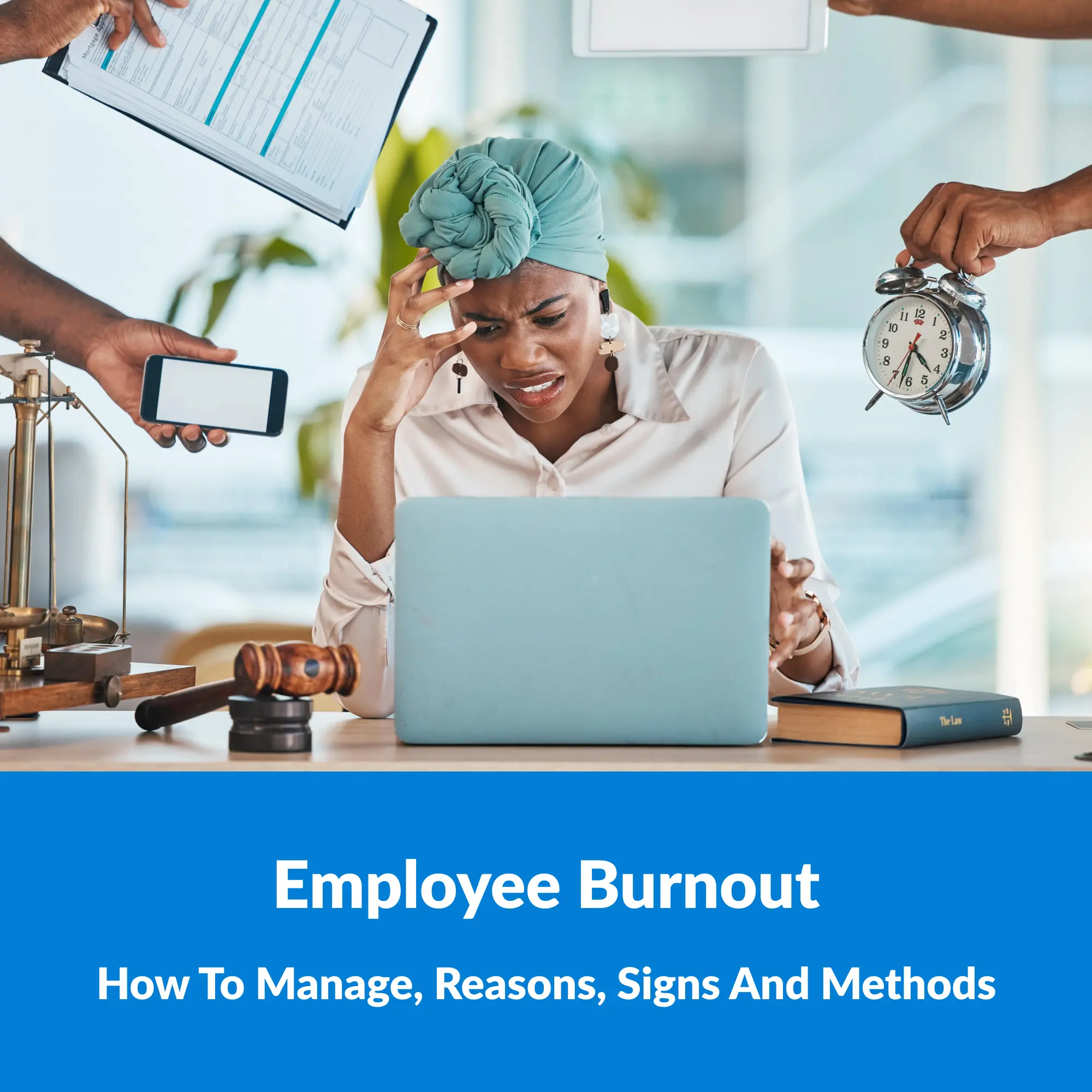Employee burnout is a serious problem in today’s workplace. If left unmanaged, it can lead to decreased productivity, poor work quality, and even employees leaving their jobs.
In this blog post, we’ll discuss the reasons behind employee burnout, the signs that indicate someone may be experiencing it, and how to manage it. Epilogue Systems hopes you find this helpful information!
What Is Employee Burnout?
Everybody experiences unpleasant, challenging, or busy days at work. However, a worker who occasionally has a terrible day is less likely to burn out.
Employee burnout is a response to persistent or ongoing workplace stress. An employee cannot burn out overnight; it takes time and constant, repetitive stress.

Employee burnout happens when workers are worn out mentally, emotionally, or both. There are three main indicators of burnout:
- Exhaustion: Employees who have experienced burnout feel fatigued and emotionally spent, helpless to cope, worn out, and depressed.
- Lack of cynicism or job identification: Employees who are overloaded frequently have a sense of disengagement from their jobs. They occasionally feel numb when thinking about their jobs. In addition, they could find that going to work is becoming more challenging to do daily.
- A sense of diminished professional competence and capacity: Burnout-affected workers question their abilities or the importance of the work they produce or contribute to.
Causes Of Employee Burnout
Stressors at work, such as feeling continuously overworked or under-challenged, being pressed for time, digital burnout, or having disagreements with coworkers, can be potential reasons for employee burnout.

It may be caused by excessive dedication, which causes people to disregard their needs. Before going into how to manage employee burnout, let’s take a look at numerous occupational pressures that can lead to employee burnout:
- Lack of control: The employee feels helpless to shape important choices that directly affect him or her, such as their work schedule, tasks, or workload.
- Lack of resources: Workers cannot obtain the equipment, supplies, or other resources required to carry out their duties effectively.
- Uncertain or unrealistic job expectations: The employee is unsure of their level of authority or what the manager or others expect of them. Or they are the subject of excessive expectations.
- Dysfunctional workplace dynamics: This includes situations when an employee deals with bullies, is disrespected by coworkers or has a micromanaging boss.
- Value mismatch: Employees’ values do not align with how their employer does business or resolves complaints.
- Poor job fit: The employee’s hobbies and abilities do not match the job.
- Extremes of activity: The work is excessively monotonous, chaotic, hectic, or slow.
- Lack of social support: Employees complain of feeling alone at work or in their personal lives.
- Work–life imbalance: Work demands too much of an employee’s time and energy, leaving little to no time or energy for spending with friends and family or pursuing other activities.
Consequences Of Employee Burnout In The Workplace

Employee burnout is a huge concern since it has numerous negative effects on the organization and the individual.
- Withdrawal patterns emerge: Employees prefer to avoid things that make them uncomfortable. Sometimes, it causes procrastination or distraction at work, and burnout-causing organizational situations are undoubtedly unpleasant. A sensible response in these situations is to withdraw—leave early, show up late, take extended breaks, and avoid the job as much as possible.
- There is a conflict amongst staff: Small disagreements escalate into huge arguments, job tasks seem like enormous obstacles, and coworkers appear as rivals as employees grow cynical and harsh toward one another.
- A drop in performance: The degree of an employee’s performance may not suffer due to burnout, but the quality can. As an illustration, consider the position of an intake interviewer in a legal aid agency.
- Family life is harmed: Burnout can result in actions that worsen the quality of one’s home life, just as it can result in activities that have a detrimental influence on one’s professional life.
- Finally, burnout may potentially result in medical issues: Insomnia and the use of different drugs were more common among burnout victims. In an unpublished study, female nurses also admitted to using alcohol as a coping mechanism for burnout, as did police officers.

How To Manage Employee Burnout In Your Organization?
We’re sure that no employer wants burnout to affect their great workers. Additionally, witnessing a loved one suffer from burnout is upsetting and exhausting.
The top 7 approaches how to manage employee burnout are listed below.
- Establish a welcoming practice culture: Be certain that providing support is a core principle of your organization. Employees who best represent your supporting culture should be recognized and rewarded. Do not put up with gossip, exclusive cliques, or cattiness. And any behavior that is inconsistent with the supportive ethos of your practice should be addressed right away.
- When giving assignments, be rational: Give your staff a reasonably difficult but manageable amount of work.
- Clarify the demands of the work and your expectations: Ensure that each employee is aware of their position and how their responsibilities relate to the overall goals of your business.
- Concentrate on the perks: Discuss with your staff what tasks excite them the most. Keep top of mind what your staff members like best about their jobs. Remind them frequently of the important contribution they make to their team’s success through diligent work.
- Reduce overtime: Get your staff to arrive and go from the office during the set number of hours. This can entail reducing their workload, using temporary workers, or recruiting an additional worker.
- Be considerate of variations: Avoid giving workers assignments that could conflict with their moral principles or raise ethical questions.
- Take into account the characters of your staff: Determine who on your team is more sensitive to criticism, who is more skeptical, and who is a perfectionist. These characteristics may make workers more likely to feel like they’re never good enough. They will make it harder for employees to recover from failure or loss of control. Find out what approaches are most effective with these workers.
=> You might need: The Effective Way to Measure Employee Productivity

In Conclusion,
Burnout can be a serious issue for employees and employers alike. It is important to take steps to prevent burnout, recognize the signs of burnout in employees, and take action to help those experiencing burnout.
Employers should create a workplace culture that supports work-life balance and recognizes the importance of employee health and well-being. Employees should use their vacation time, take daily breaks, and practice self-care.
By taking these simple steps, we can help reduce the risk of employee burnout. Have you experienced or witnessed employee burnout? And how to manage employee burnout that you have employed?





